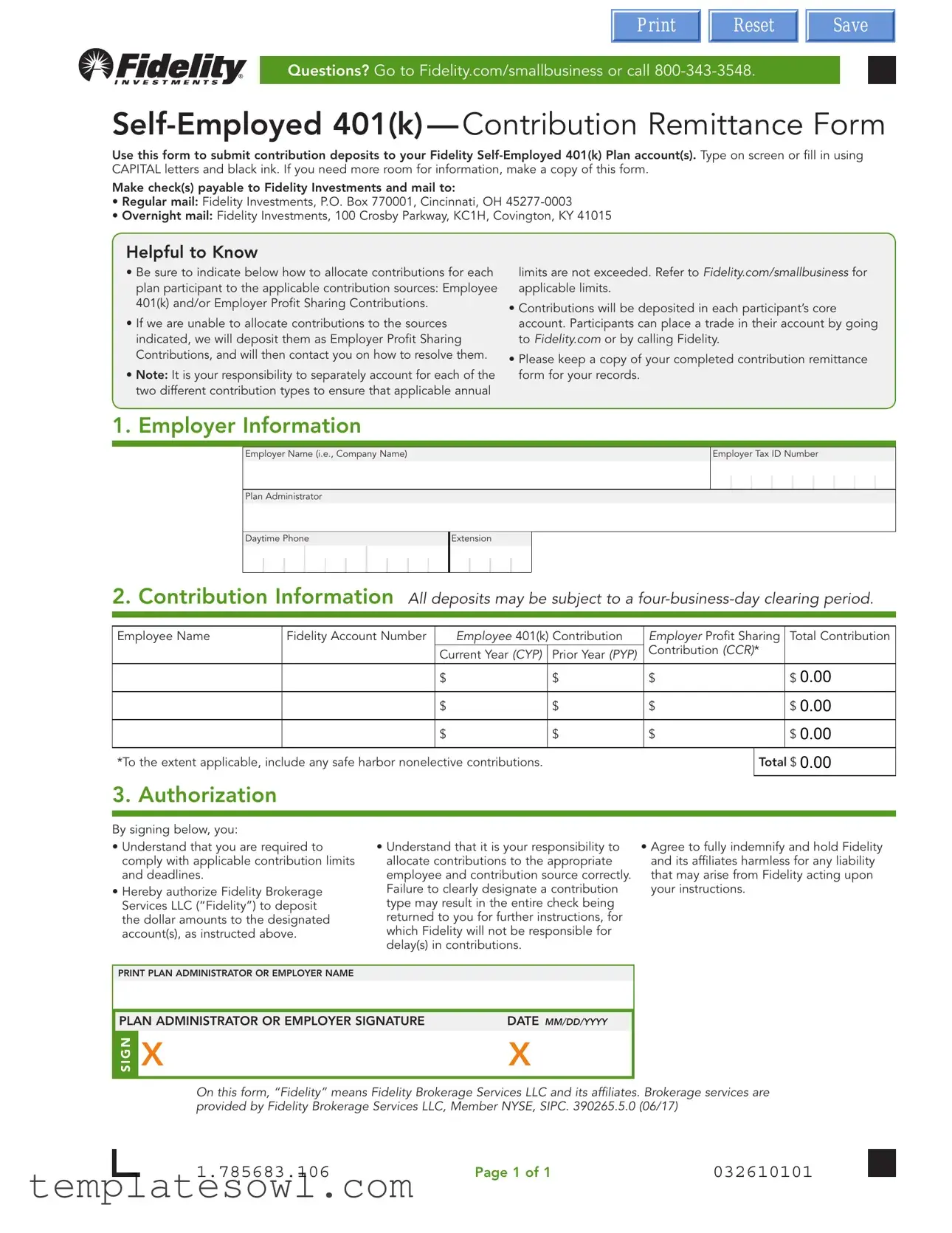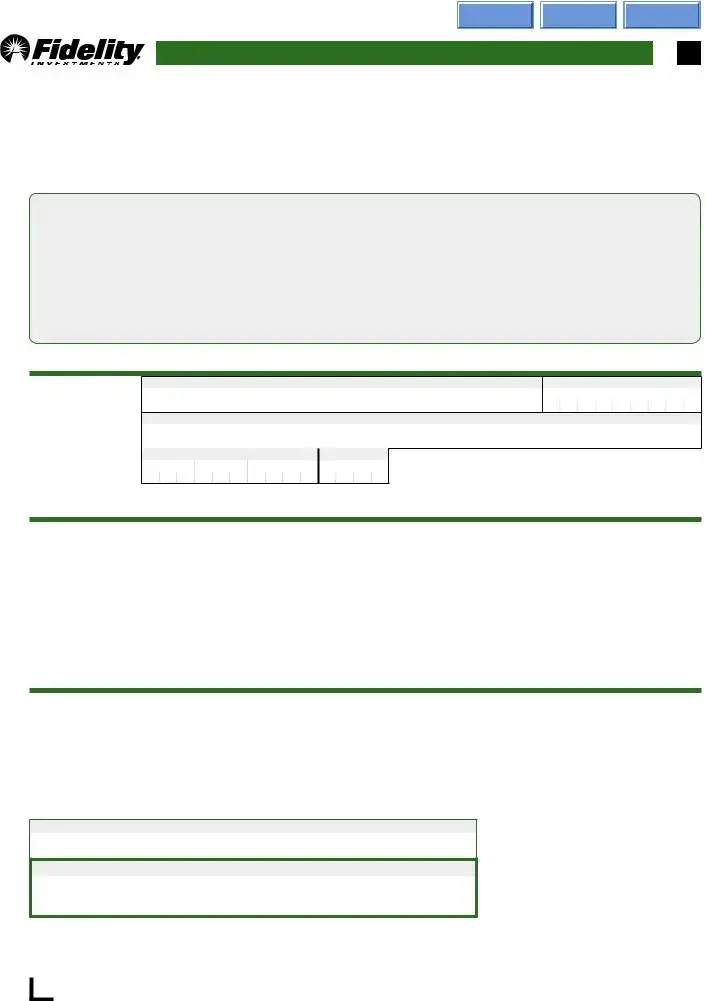What is the Fidelity Self Employed 401(k) Contribution Remittance Form?
The Fidelity Self Employed 401(k) Contribution Remittance Form is used to submit contribution deposits to your Fidelity Self-Employed 401(k) Plan account. This form ensures that your contributions are allocated correctly across different sources, such as employee contributions and employer profit sharing.
How do I fill out the form?
You can fill out the form by typing on screen or by using capital letters and black ink. Be sure to clearly indicate the allocation of your contributions to avoid issues with processing. If you need extra space, feel free to make copies of the form.
Where do I send my contributions?
You should make checks payable to Fidelity Investments. For regular mail, send them to Fidelity Investments, P.O. Box 770001, Cincinnati, OH 45277-0003. For overnight mail, use Fidelity Investments, 100 Crosby Parkway, KC1H, Covington, KY 41015.
What are the contribution limits?
Contribution limits can vary. It is essential to refer to Fidelity.com/smallbusiness for the current limits applicable to your contributions. You must ensure that you comply with these limits to avoid any penalties.
What happens if I don’t clearly designate my contribution type?
If you fail to clearly indicate the contribution type, Fidelity will deposit the funds as Employer Profit Sharing Contributions. They will then reach out to you on how to resolve any discrepancies, but note that this may delay your contributions.
Can I trade in my account after making a contribution?
Yes, once contributions are deposited into your core account, you can place trades. You can do this either by visiting Fidelity.com or by calling Fidelity directly for assistance.
How long does it take for contributions to clear?
All deposits may be subject to a four-business-day clearing period. It's important to account for this timeframe when planning your contributions and any potential trades.
What should I do with the completed form?
Once you have filled out the form, keep a copy for your records. This will help you track your contributions and ensure you have documentation in case any issues arise.
What should I include in the contribution amounts?
In your contribution amounts, be sure to include all relevant contributions. This entails current year contributions, prior year contributions, and any applicable safe harbor nonelective contributions. Make sure to calculate the total accurately.
What is the authorization section for?
The authorization section of the form requires your signature to confirm that you understand your responsibilities regarding contribution limits and allocation. By signing, you grant Fidelity the authority to process your deposits as instructed and agree to indemnify them against any liabilities related to your instructions.

